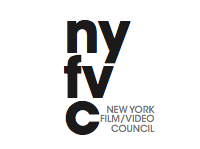In Honor of George Stoney
Monday August 21, 2017, 6pm.
The New York Public Library for the Performing Arts
Dorothy and Lewis B. Cullman Center
111 Amsterdam Ave (between 64th and 65th St.)
Third Floor Screening Room
On Monday, August 21, the New York Film/Video Council celebrates the life and career of the legendary George Stoney with a special screening. Programmed by David Callahan of the New York Public Library and projected from rare 16mm prints, the program combines one of George’s hidden gems, How to Look at a City (1964) with the inspiring Hobie’s Heroes (1980) by Steven Montgomery, who was influenced by George’s eye-opening documentary class at NYU.
How to Look at a City
Produced and directed by George C. Stoney; narrator, Eugene Raskin
29 min., 1964
Part of the Series "Metropolis: Creator or Destroyer?"
Eugene Raskin—the writer, musician, and professor— paints a word portrait of New York, as seen by lovers, adventurers, and the star-struck, against a background of jazz. He contrasts old neighborhoods with the bustle of the business world and discusses three fundamental standards used by architects and planners to judge the quality of a neighborhood - human scale, density, and variety.
Hobie's Heroes
Produced and directed by Steven Montgomery
29 min., 1980
Portrays a group of young divers striving to overcome their fears and achieve success under American coach Hobie Billingsley, who produced six Olympic medalists, and is considered one of the most significant figures in the history of diving.
Hobie’s Heroes was part of George’s personal 16mm film collection and he screened it often for audiences of young people.
About George:
In addition to his career as a legendary filmmaker and beloved film professor, George Stoney (1916-2012) was a cherished NYFVC past President and board member who, among many other achievements, played a key role in democratizing the media with the creation of public access television. George never failed to inspire with his sense of mission, hospitality, his determination to use cinema to give voice to those outside of power, his willingness to travel -- even up to age 96 ––to explore experimental, documentary and narrative cinema, and his strong commitment to his community.
